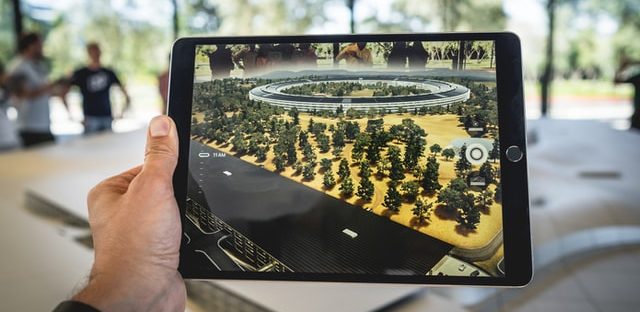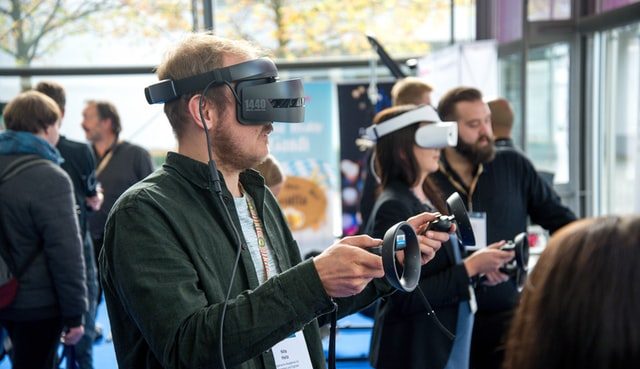Have you ever thought about the role that AR and VR in real estate might have for your future real estate projects? There are many potential contributions of AR and VR, and they are rapidly becoming more common. With this in mind, today, we’re looking at some of the most significant changes influenced by these technologies in real estate.
How AR and VR Are Changing the Real Estate Industry?
Augmented Reality AR and Virtual Reality VR change the real estate industry by improving property viewings, visualizing changes during development and renovation, and enhancing the overall transaction process for buyers, as well as sellers.

What are AR and VR?
Before we can look any further, we need to first start by addressing the main question: what are AR and VR? Well, these are both actually surprisingly simple technologies to describe, and you may have even used them in your personal life at some point in time.
Augmented Reality AR
First up, let’s consider AR. AR stands for augmented reality, which is effectively a type of interactive experience that allows the user to see the world around them in a slightly different light. Apps such as Pokemon Go are an excellent example of augmented reality, taking a standard image or perception of the world around you and overlaying it with new features and information.
Virtual Reality VR
The other alternative is VR, or virtual reality. While AR systems effectively “work with what’s already there,” virtual reality is a little different. Instead, virtual reality offers an entirely new world and scene; for example, you could be sat on the beach, but with a VR headset you could begin exploring the very inner midsts of a big city! The market size for this technology has been increasing consistently and is expected to have a CAGR of 18% till 2018.
Of course, both AR and VR systems effectively change the way we see the world around us. The most notable feature of these two systems is that they help us visualise something we might otherwise not have seen. This feature could make both AR and VR systems highly valuable within the field of real estate and could even change the way we buy, sell, and renovate our homes.
How AR and VR Are Changing the Field of Real Estate
There are countless potential ways that AR (augmented reality) and VR (virtual reality) could change the field of real estate. Of course, as with anything, this will inevitably depend on how the technologies are adopted by the customer and used. However, to get the best results from either, it’s important to start with a clear understanding of their limitations and potential applications.
Implementing Augmented Reality in Real Estate
First of all, let’s consider the potential value and merits of augmented reality systems in your commercial and residential real estate projects. In many cases, augmented realities can actually be incredibly powerful, allowing you to visualise something new over the top of the existing world itself. As such, for projects that are looking to create an extension, or if you would like to see what a new piece of furniture might look like in your property without the hassles, AR could be just what you need.
There’s a hugely notable benefit of augmented reality systems that we should point out here: they’re affordable and widely available. As such, while it might sound futuristic, you could be surprised; augmented reality might soon be integrated into more real estate projects than ever before, as it’s affordable, practical, and well-established.
Implement Virtual Reality in Real Estate
As a second option, it’s highly worth considering the potential merits of virtual reality within real estate. Indeed, virtual reality is a unique system that takes the user’s perception to a new location for all intents and purposes. The limitations often seem numerous, effectively offering an immersive cinema experience for users. And the potential applications of this technology for the real estate field are massive.
First, there’s the potential for VR to massively change how we view and buy properties. Instead of needing to arrange a house viewing, for example, VR could be implemented to allow a buyer to explore a property directly from the comfort of the real estate agent’s office. This would save a huge amount of time regarding the management of bookings and the like; what’s more, it could be an excellent way for real estate businesses to agree on a faster sale of a property.
In addition to this, there’s also another way that VR could be used within the field of real estate: To visualise a change or renovation to a property. Indeed, while AR systems can be used to show what a certain house design might look like on a currently empty plot of land, VR can even work with your existing property structure. This simple change can go a long way towards helping real estate owners and developers an immersive experience for what their newly renovated property might look like.
Naturally, both of these applications of VR in real estate could be highly beneficial for the industry. Not only could the use of VR speed up the process of selling a property, but it may, one day, prove a pivotal component of effective property management. As such, whether you’re planning an extension or want to see what your home could look like without that pesky dividing wall, VR systems may be just what you need to bring the change to life.

How are AR and VR used in Real Estate Today?
Will AR and VR be a good or bad change for the real estate industry? Well, as with most things in life, it’s clear that this will depend on who, specifically, you ask. Nevertheless, irrelevant of someone’s personal opinions regarding AR and VR technologies, it still remains clear that these will inevitably play a prominent role in how we see the real estate field in the future.
During House Viewings
The most obvious change we can expect to see would be regarding the future of buying and selling properties. At present, before buying or selling a property, it’s usually necessary to have countless house viewings and the like to ensure the buyer is satisfied with the property. However, this offers a few key frustrations. First, it’s a hassle that many house sellers could ideally go without; after all, in most cases, you’ll need to head out while the house viewing is taking place so as not to disturb the potential buyer – something that is understandably frustrating!
What’s more, for many people, house viewings come with a lot of time to tidy up before the viewing, and if there are multiple viewings across multiple days or weeks, this can be even more frustrating.
And, despite all of the hassles, the traditional house viewing model may not be overly practical in any case! Indeed, in most cases, potential buyers feel a little bad to be nosing around the house to see what it’s really like, and this might only give them half of the picture. This could result in buyers offering on a house that’s not right for them; conversely, this could also result in a buyer failing to put a bid in because they just didn’t see those little details that make them think, “Wow.”
Luckily, the use of VR house viewings could be revolutionary in this regard. With the right technology, a scan could be taken of the property to create a virtual reality of it; then, potentially interested buyers can explore the house to their heart’s content from the comfort of the real estate agent’s office. This takes a lot of pressure off of house sellers to get out of the way and keep the property spotless, while offering a convenient option for buyers.
Visualize Changes
Another great method that the real estate industry could implement is, AR and VR is to visualize changes. Indeed, in many cases, investing in a renovation could be prevented due to worries it might not be quite the right option. After all, once the renovation is done, you can’t go back very easily! Luckily, with AR and VR, potential changes can be mapped out using Building Information Modelling techniques, allowing you to see how additions or changes might alter the way you enjoy the current space. This is true, both for developers and property owners too, offering ample opportunities for owners to make the most of these new and innovative technologies.
Overall Benefits for the Industry
At present, the cost is perhaps the main limiting factor for AR and VR systems, and inevitably they can’t offer quite the same experience as the real thing. Still, it remains likely that AR and VR systems are PropTech solutions that will transform the way we experience the real estate industry, and as the technology becomes ever more advanced, it seems likely we’ll see new great things in real estate as a result.
Conclusion
Both AR (augmented reality) and VR (virtual reality) are playing a significant role in modern real estate transactions and construction. These new technologies allow buyers to have easier home tours and give homeowners intuitive visualisation possibilities. Developers can also benefit from AR and VR to predict how certain design changes will look in the finished building.
If you want to learn more about commercial real estate, PropTech, smart buildings, and smart cities, feel free to take a look at our other blog articles.

